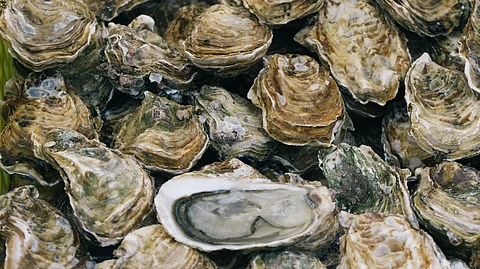Professor Kirsten Benkendorff of Southern Cross University, who co-authored the study, calculated that roughly two dozen oysters would contain enough (oysters' blood) hemolymph to give the average person an active dose of the protein. However, she emphasized that further research was required to purify the protein and comprehend its mechanism of action. [4]
She said “Oysters, as filter-feeding organisms, are sucking bacteria in through their bodies all the time” which makes them potential candidates for finding substances that could destroy bacteria. However, this also means that in areas like those close to stormwater drains, they may accumulate substances that could be dangerous to humans if ingested."[5]
According to Benkendorff, the protein may aid in the treatment of respiratory infections that are resistant to conventional antibiotics due to biofilms. [5]
Infectious bacteria frequently band together to form biofilms, which are sticky colonies that help them better elude the human immune system and drugs.[4]
The researchers discovered that the oyster hemolymph protein worked well against Streptococcus biofilms. [4]
References:
[1] Gaynes, Robert. 2017. “The Discovery of Penicillin—New Insights after More than 75 Years of Clinical Use.” Emerging Infectious Diseases 23 (5): 849–53. https://doi.org/10.3201/eid2305.161556.
[2] “Stop the Spread of Superbugs.” n.d. NIH News in Health. https://newsinhealth.nih.gov/2014/02/stop-spread-superbugs.
[3] CSIRO. n.d. “Climate Change Is Fuelling the Rise of Superbugs. What Can We Do to Save Ourselves?”. https://www.csiro.au/en/news/All/Articles/2023/February/climate-change-fuelling-the-rise-of-superbugs.
[4] Summer, Kate, Qi Guo, Lei Liu, Bronwyn Barkla, Sarah Giles, and Kirsten Benkendorff. 2025. “Antimicrobial Proteins from Oyster Hemolymph Improve the Efficacy of Conventional Antibiotics.” PloS One 20 (1): e0312305. https://doi.org/10.1371/journal.pone.0312305.
[5] Lu, Donna. 2025. “Australian Oysters’ Blood Could Hold Key to Fighting Drug-Resistant Superbugs, Researchers Find.” The Guardian, January 20, 2025. https://www.theguardian.com/science/2025/jan/21/australia-sydney-rock-oyster-blood-drug-resistant-superbug-bacteria-antibiotics.
(Input from various sources)
(Rehash/Sanika Dongre/SSK)


